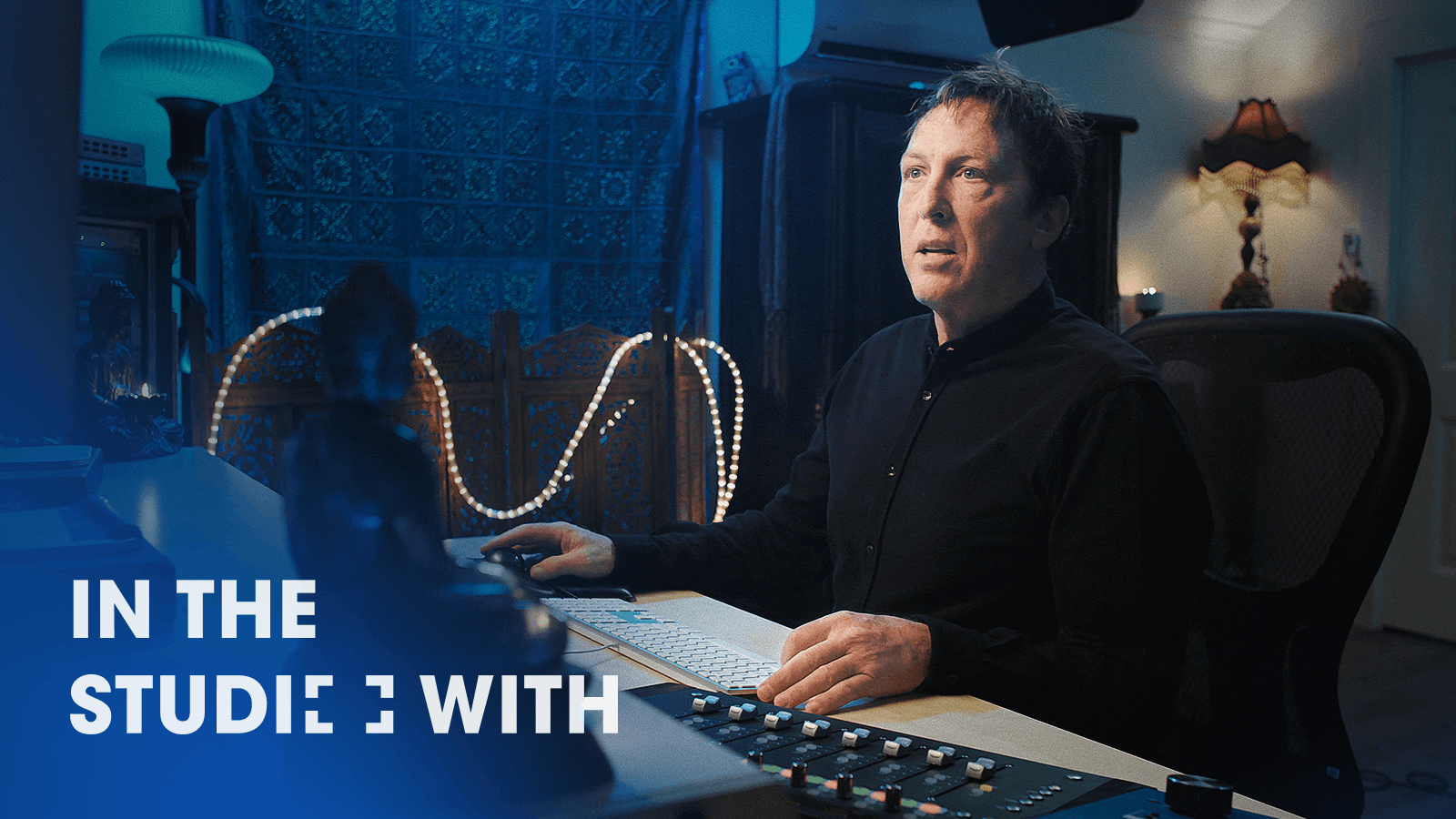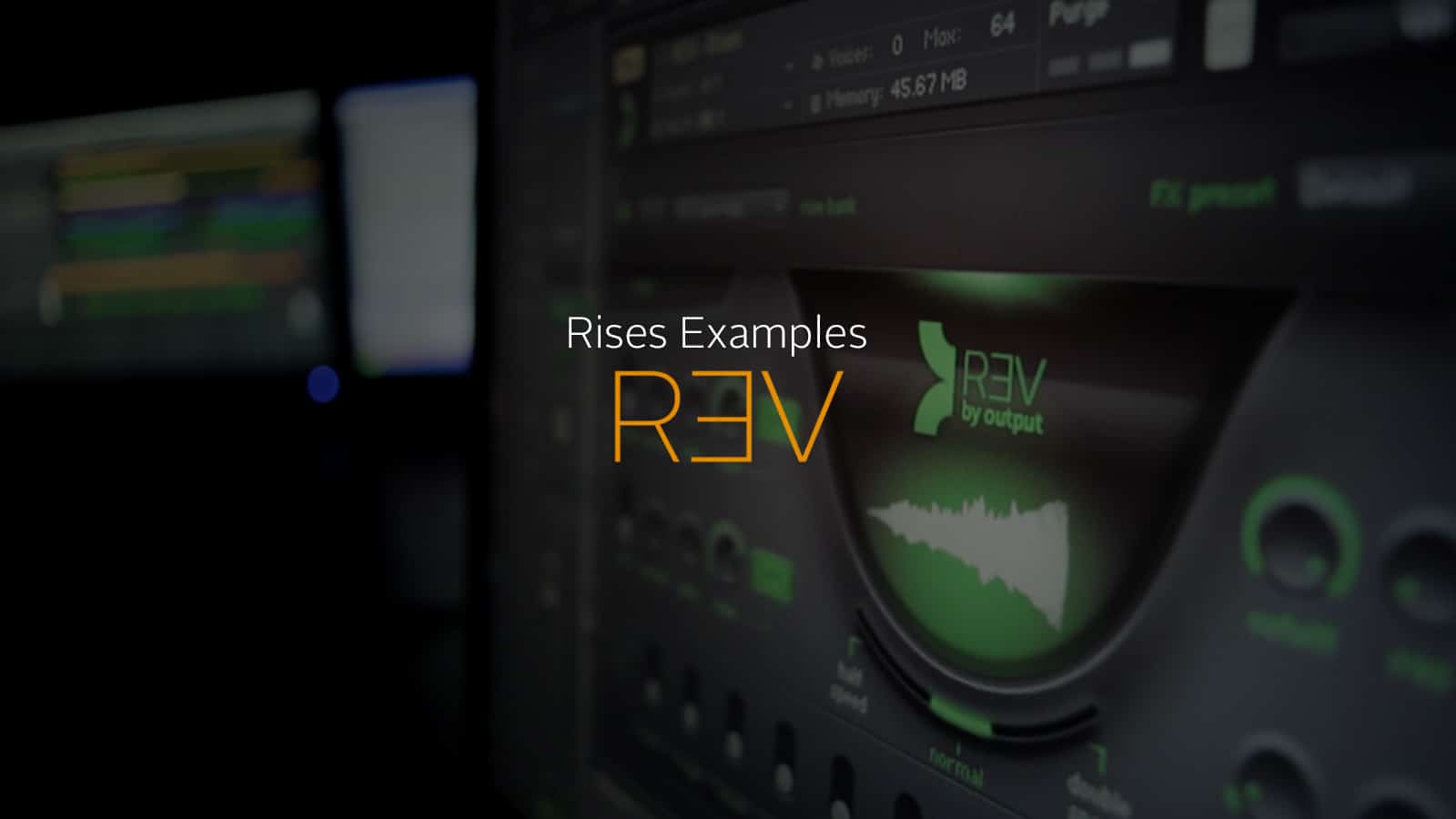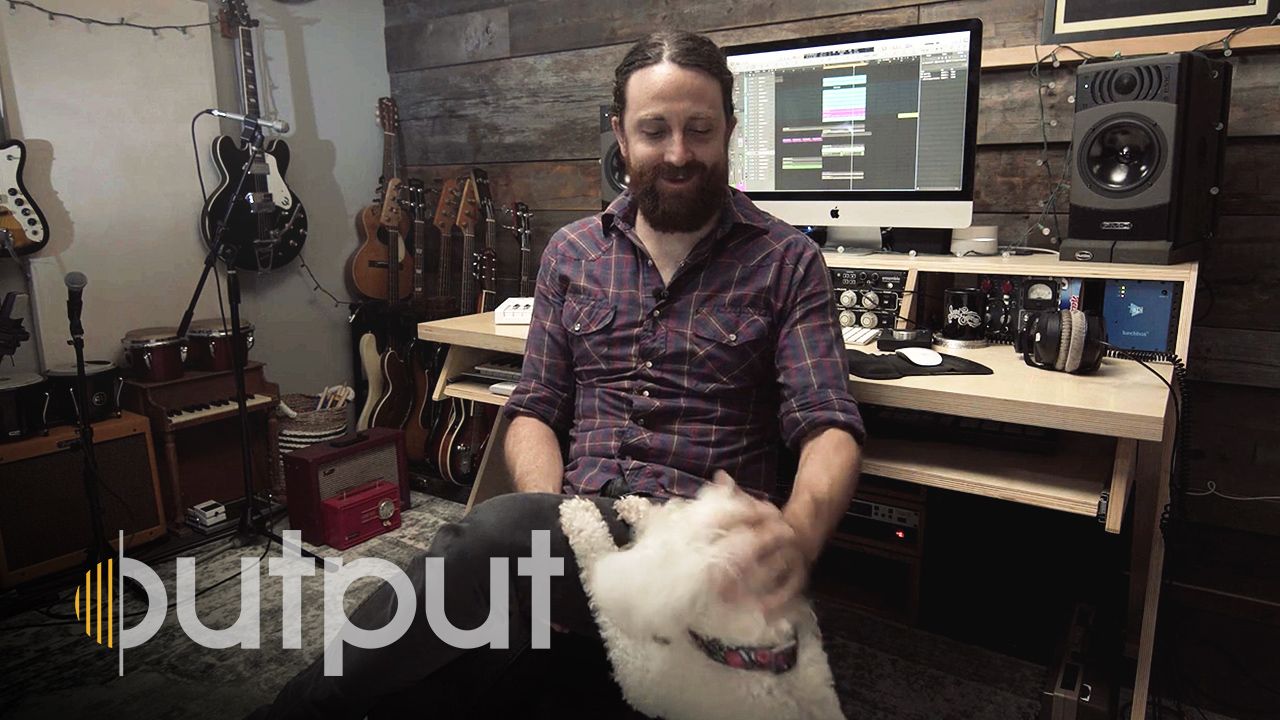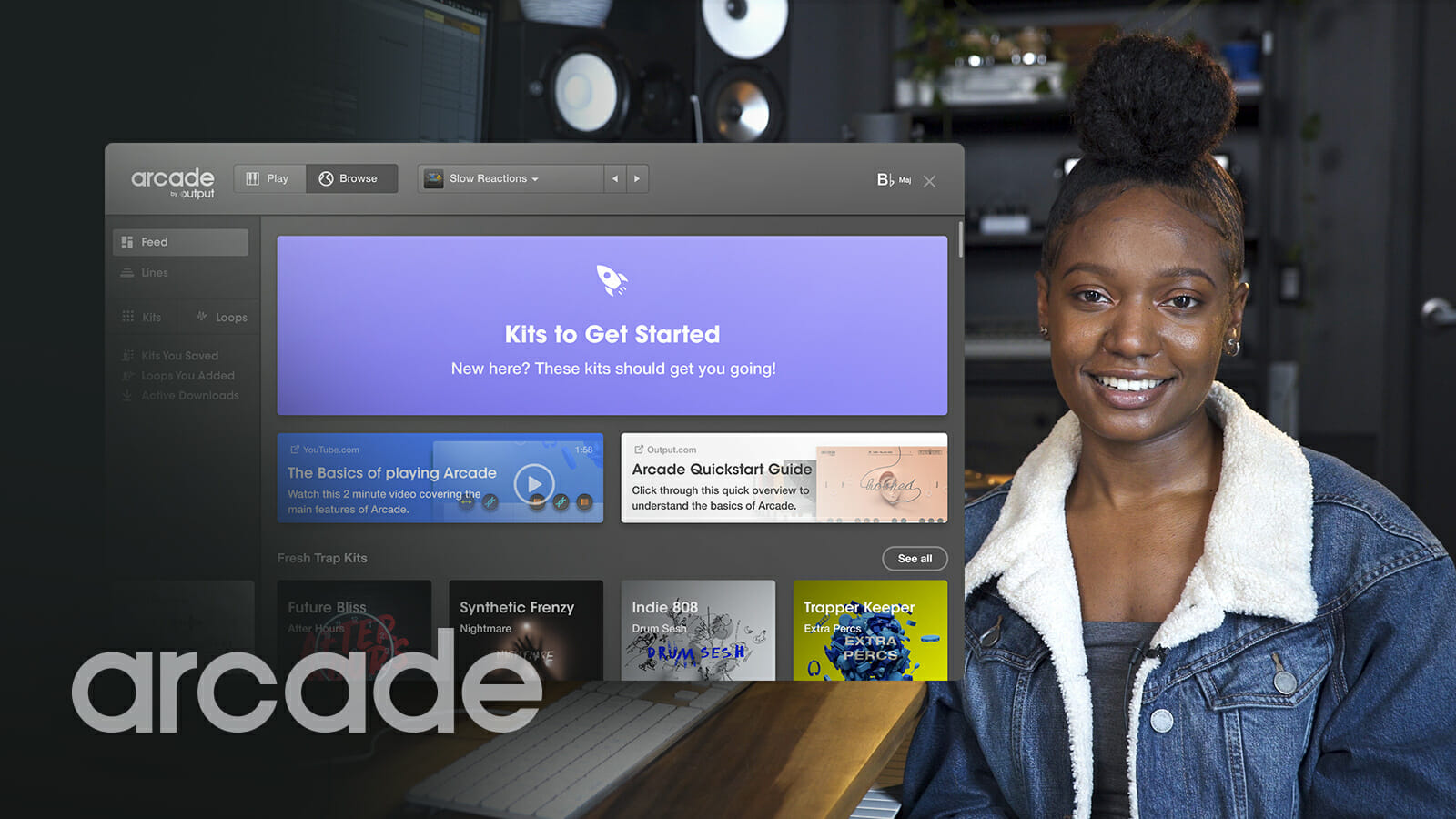Greg Townley mixes big movie music. He has over 100 credits, including titles like Downsizing, Up In the Air, and Wedding Crashers. He also mixed and produced movie trailer music for titles like 1917 to Avengers: Endgame and Blade Runner 2049. And for you VR fans, several years ago Townley mixed the revolutionary virtual reality experience for U2’s “Song for Someone,” which he called a “sonic experience in immersive audio and mixing.”
So yes, he’s done it all.
We were lucky enough to meet with him in his studio, New Era Scoring, where he showed off how he uses the whole sonic spectrum, with the help of Output, to make music jump off the screen.
The differences between a mix for film and a mix for trailers
When I’m working on a film, I get brought in at the last minute after everything is sorted out.
I always say that doing movies is 80 percent technical, 20 percent creative. But when you’re doing trailers, it’s 80 percent creative and 20 percent technical. You’re constantly looking for the maximum emotional impact of the music.
With trailers, we’re usually creating things from the ground up. Sometimes we’ll do a 100-piece orchestra with 10 drummers, and an 80-voice choir. Sometimes we’ll do much smaller ensembles.
A lot of times people want their music, especially in trailers, to sound better, but not different. You have to have somebody that can look at a piece objectively. That third-party person is not emotionally attached to it. I don’t put my own ego in it. I’m here to help.
How to start a mixing session
The very first thing I do when I get a new piece is listen to their reference just to see what their overall intent was.
I have a spec sheet that I send out: take off all processing, all EQ, all reverb, all volume information. I want the rawest possible sound because I’m going to redesign a sonic picture for you. We only do that by completely pulling everything off. And even when using multi-mic position samples, I prefer the drier sounds.
“Doing movies is 80 percent technical, 20 percent creative. But when you’re doing trailers, it’s 80 percent creative and 20 percent technical.”
Building dimension with mics everywhere
I don’t always use the far away mics. If everything’s far away, there’s no way to push and pull. Because where there’s light, there has to be dark, right? So with something close, you have to have something far away. That’s how you build dimension and these huge music tracks.
Trailer music is about filling every ounce of the spectrum that you have, at all times, with every group of instruments.
When Audiomachine needs an audio expert
This is a piece of trailer music written by Paul Dinletir, the owner of Audiomachine. He brought me on this project well after he had composed the entire thing. [He wanted me] to bring out certain elements in it and to punch it up. Most of this is live, but there are some added samples here.
Playing with space and sound design
Depending upon the size of the room that we’re in, sometimes we’ll have up to 20 different microphones in 20 different perspectives.
Sometimes we’ll add strange things that you wouldn’t realize are in the track, but they do add dimension to the track…odd things that you don’t really hear once everything is playing.
You can tell that there are certain things that are closer, and things that are further away. It’s all spread top to bottom, front to back, left to right.
Emotion, impact, or energy: pick one when layering
I find that I want to simplify drums. [If] you’ve got four drum parts playing one part, and four drum parts playing the other part, all of a sudden you can’t hear anything. There’s nothing that’s impactful.
As far as layering. I think the biggest mistake that people can make is having two different ideas in the same section. It’s either emotion, impact, or energy.
You can have impact in an emotional section. But if you have energy in an emotional section, it waters it down. It’s two different ideas. It’s hard for the listener to assimilate.
As far as layering, it’s fine to layer as long as you’re putting forth one idea at a time. If it’s just crowding up the theme, sometimes it’s just not necessary, and the piece actually stands out a lot better without it.
Enter Analog Strings
Here we have short strings, a hallmark of trailer music. And I know that those aren’t necessarily going to cut through all these drums. So I use Analog Strings. This particular patch is called Stacks and Bombs, and with just slight alteration it can really help a track cut through the enormity that is about to happen.
When I add Stacks and Bombs to it…it may not sound particularly pleasing when you’re actually soloing it, however, it does have aggression to it when it’s trying to go through all these drums. If I play it without Analog Strings, you’ll hear that it can get lost very easily within the drums. They don’t particularly jump off the screen.
“The biggest mistake that people can make is having two different ideas in the same section.”
Adding Analog Strings to short strings, Marcato strings, and orchestra enhances it in a way where it gives it saturation and enables it to stick above percussion.
It pushes those strings forward enough where they can compete with huge drums and other instruments, brass and such.
One of the reasons why I gravitate towards Output’s musical instruments is they are real-world sounds that integrate really well with orchestra. So you have Brass and Winds, you have the Analog Strings, and you’re able to achieve something by adding those on top that an orchestra actually isn’t able to achieve. But it also doesn’t sound like a completely different element.
Shhhhh: it’s the secret about loud music
I mixed the loudest music in the world, unbelievably quietly. Like, you’d barely be able to hear it as we are talking right here. The quieter the music is, the more it forces you to listen.
There’s a difference between hearing and listening. We hear things in the physical world, but when we’re listening, we’re using our mind. So when we’re listening to a track, when it’s quiet, you’re actually forced to listen and find out what’s there.
When you crank it up, you’re hearing it. You’re hearing the bottom end. You’re hearing all of these elements, but you’re not necessarily listening. You’re feeling the impact of it.
But when it’s super, super quiet, you’re forced to actually listen to what’s there.
In conclusion: keep it moving
If you looked at my session, everything is constantly moving. Everything is pushing and pulling. The whole track moves. Very seldom do things stay static. In all my mixes.
I’ll record an orchestra in a certain way because I know that I’m going to want more space around it. So I don’t cluster everything in tight groups and make it a small, even picture.
I throw things off all over the place. I bring things way forward, push things way back, put things hard-left or hard-right. [I use] tons of brightness, tons of top-end, tons of compression, subharmonic frequency.
I use every ounce of everything from 20 cycles to 15 or 16K. You’re almost mixing in a three-dimensional picture.
If you want more production secrets, check out this studio tour with Hudson Mohawke.



